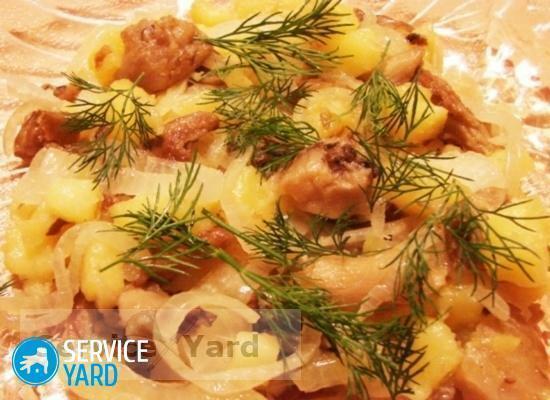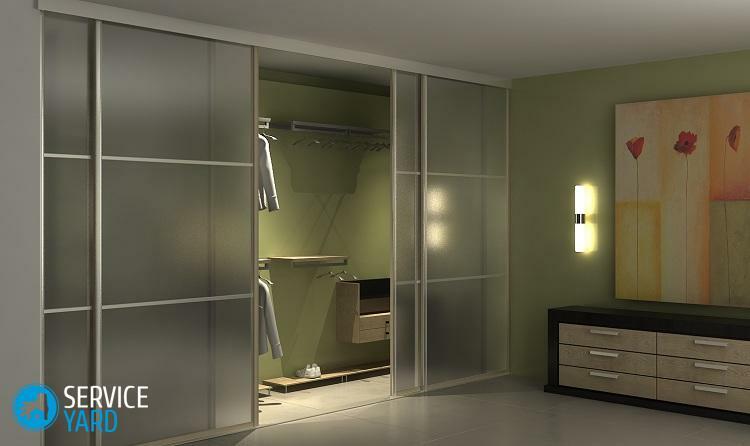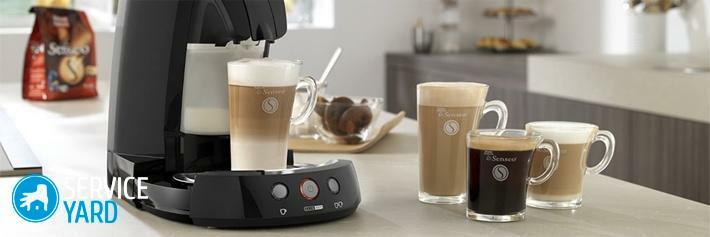House - this is the place where you want to feel as comfortable as possible. There are various ways to make it even more comfortable. But it is especially nice when the decorative elements made with their own hands. Decorative panels always attract admiring glances in the interior, and to make them out of scrap Materials will not be difficult, if properly observe the technology and work step by step and instructions.
Content
- What it is
- Defining the scope of work
- Types of panels with their own hands
- From the prints of fruits and vegetables
-
From paper
- Of round paper designs
- from photos
- Of colored paper
- From newspaper tubes
- from Wallpaper
- Of salt dough
-
From fabric
- Patchwork
- Felt for creativity
- Panels made of burlap
- Panels made of wool
- From beads
- Of thread and nails
- of buttons
- mirror panels
- wooden panels
- Dried flowers and leaves
- Cereals and seeds
- Decorative plaster
- gypsum plaster
- Decoupage
- Quilling
What it is
The panel is part of the decor and its purpose is to decorate the interior and filled the empty space on the wall or ceiling. It sounds very similar to the description of the picture, is not it? What distinguishes it from the picture, if both options are designed decor to decorate the room? The answer is simple: the picture is the subject of the art of painting, and the panels may consist of anything. Dough, plastic, gypsum, glass beads, fabric, wood - there is no limit of imagination when it comes to the manufacture of panels and material for decoration can be anything. If you want to make your interior unique, the panels with this perfectly cope!

Defining the scope of work
The first stage in the creation of wall panels - to determine the design of future products. If you already know at what point will it be located, it complicates the task. It is necessary to weigh the color, size, what will it have fits if the material from which it is planned to make in the overall picture of the interior.

So, is determined by: size, color, and then, what materials will be used. This is the first step. If possible, it is necessary to draw a sketch of the proposed product. It will take into account all the nuances in the performance of tasks.
If the basis of a piece of cardboard, canvas or any other hard surface, then made her mark: where and how will be placed decorative elements. If the base-fabric, it is stretched to the base (eg, on a piece of plywood, boards or plastic), and the rest of the fabric is fixed on the back side. Once the artifact is executed, it is placed in a picture frame and hung on the wall.

There is another option of manufacturing panels on the basis of tissue. Need to take a firm basis, for example, gypsum board right size and foam sticking to it. On the basis of the resulting soft and stretched fabric. In this case, you can do without the frame.
After all preparations can proceed to the main part of the manufacture: decoration.

Types of panels with their own hands
Consider the main types used in the decoration:
| cloth | This is all the options embroideries, appliqués and tapestry techniques, which are made on the fabric. Technique can be anything: from embroidery to machines made mass production. |
| stone | Often made in mosaic technique. They used natural stones that are considered noble: basalt, marble and others. Less commonly present in such products, and artificial stone. |
| ceramics | Manufactured using ceramic plitochek and are usually placed in the bathroom or kitchen. |
| sculptural | Volumetric embodiment of the article which is made of special plasters, plaster or metal. |
| graphic | All that is done with the help of various types of printing. This may be reproductions of paintings, photo printing. |
| Other types | Here are handmade products, which are made using any materials at hand. Salt dough, wood, dried flowers and plants, shells, clay, glass beads - no fancy limit for decoration. |

We give some examples of manufacturing various types of panels:
From the prints of fruits and vegetables
The creation of this panel may be involved and the child, because it is very simple to implement. Bright, colorful design of this creation is ideal for the kitchen.
needed for the manufacture of:
- Solid vegetable or fruit (apples it may be, any citrus, pear, cabbage, etc.);
- Paint (gouache, oil, acrylics);
- The basis on which will be decorated. This can be cardboard, board, cloth, stretched on a sheet of drywall.
See also:Ideas for home decor: 15 ways to decorate things with their own hands

Substrate surface previously degreased and painted in the desired color. Fruits and vegetables are cut in half and dip them in paint. The dye is best to pour a thin scrapped in a plate. Putting a colored fruit cut side to the base and get a stamp.
Stamps are made in any desired by site-based, but it is best to look like the images that are arranged symmetrically.

From paper
There are many options for the manufacture of paper creations. Let's look at the main ones:
Of round paper designs
This product can be made with their own hands for an hour and it's a great tool to decorate the interior, but also get a lot of positive emotions.
Prepare materials:
- Colored paper;
- paper clips;
- Scotch;
- pins;
- Stapler.

Procedure:
- a piece of paper accordion folds, like a fan.
- Accordion folded in half.
- Stapler fasten the verge at the bend to the accordion is not broke, and got a little fan. Putting these three fans and get a circle.
- Bellows of different colors can be combined in one round, then the panel will turn even brighter.
- A lot of circles joined together by attaching them to the wall with safety pins. The size of circles and the composition itself can be anything big and take any shape.

from photos
In fact, it is a collage of photos and artistic images that can both have a certain theme, or to be completely abstract. Photos combined into one composition and fixed on a wall or other basis. Design Option: merge multiple images of sea and sky.

Of colored paper
Options for manufacturing handicrafts made of colored paper in abundance. We now offer a version of "Flowers of the Heart", which is suitable even for children's master class. It is very easy to perform, is an excellent tool for the development of fine motor skills of the child, and it looks amazing!

We need:
- Office colored paper;
- The basis for the panel;
- Pencil;
- Scissors;
- Cardboard;
- Paints;
- brushes;
- Frame.

Begin to implement:
- Cut out the template in the form of a heart. To make a flower, we need eight of hearts. All hearts in the flower should be the same size.
- Fold in half and get the heart of the petal.
- Glue the flower petals on such a basis. This may be a board or a wall.
- To make the leaves of a flower, you need a small green hearts.
- Put the flowers in any order, depending on the overall shape of the desired panels. It can be a heart shape, and can be laid out in the shape of flowers and trees. We are creative and put it into practice!

From newspaper tubes
Newspapers may well be suitable for the production of panels with their own hands.
Necessary materials:
- newspapers;
- Knitting needles;
- Glue;
- Wire;
- Brush;
- knife;
- Acrylic paint.

Procedure:
- Newspaper sheets are cut with a knife into two parts.
- We put on these parts with a thin adhesive layer.
- Cheat sheets in newspapers spoke diagonally. thin tubes should get.
- Take acrylic paint and stain newspaper tube in the desired color.
- Coat with the resulting adhesive flagella again and wrap the ends of each tube newsprint so as to obtain a spiral. Both ends need to spin in opposite directions, if you want to get the shape of a sea horse. You can draw a circle: for this you just need to turn the whole tube in a spiral.
- Fusilli fasten elastic bands and leave for 24 hours to dry.
- Remove the gum and compose elements of the resulting desired pattern. The elements can be directly mounted on the wall or create a mural on a pre-arranged basis.
Circles of newspaper tubes can be painted in different colors, combining in a single round several shades. It is interesting to look circles with gradient transition from one color to another.

from Wallpaper
This is an interesting solution, which will revive your interior and make it even more cozy.
There are several ways to make your own panels of wallpaper:
- patchwork technique
Cut a piece of the existing wallpaper. Slices can be any shape, but must fit to each other. Consider the general form of all future compositions. For example, you can cut the squares with the colors of the three different types of wallpaper and combine them together in several rows in a specific sequence. In this case, the pair are not necessarily arranged symmetrically.
See also:9 kinds of manufacturing interior dolls with their own hands

- Technique whole wallpaper
Take the wallpaper with the desired image (eg, Sakura), carefully cut it and paste it into the box, or glued to the wall and decorate molding or paneling.

- The combination of styles
Here, design is limited only by your imagination! Combine whole pieces of wallpaper with fine carved fragments. It is a modern and inexpensive way to decorate your home.
Important! If you can not decide on the future composition of style, you should look at the picture of flowers and plants in soft colors. It is always appropriate and looks nice.

Of salt dough
This type of panel is one of the budget, since it requires a minimum of material and is usually all you need is always at home for its production.
We offer an option of molded panels, which will be printed pens and your child's legs. This creation will allow you to decorate the bedroom of your baby in an original way and permanently preserve the memory of his childhood.

We need:
- Flour;
- Salt;
- Gouache color (optional).

Procedure:
- Take the flour and salt in a proportion of two to one. Two cups of flour mixed with salt glass, then water is added. Approximate volume of water in an amount of flour and salt make 125 ml.
- Knead the dough. If it sticks to the hands, then add more flour. The dough should be elastic and does not stick to hands.
- If you want to make the panel a color, it's time to add gouache, decorate her pastry.
- Roll out the dough. Approximate its thickness should be about 2 centimeters. Shape pieces of dough can be any.
- Dough tray to the baby and gently press it into the palm and foot weight. Pressing should be easy, but sufficient to track abandonment.
- Do the test two through holes - this is for the future ribbons, which then will hang panels.
- We spread everything on the tray and close the baking paper.
- Preheat oven to 90 degrees and to set the batter for drying. It takes about two - two and a half hours. It is necessary to carefully turn the dough once, in the middle of drying.
- Coloring the resulting panels colored or white gouache, vdevaem tape in the hole - voila! Very touching and cute decoration for your home is ready!

From fabric
Making cloth panels become fashionable not so long ago: only lovers hand-made in recent years to pay close attention to their cloth. This product is ideal for interior in the style of Provence. Consider the basic kinds of fabric panels that can be done with his own hands:

Patchwork
Various techniques for making such panels, but a general one for all: this is the use of scraps of fabric in the product. On the Internet there are plenty of patterns such products. The panel may be a cloth, and the hard structures. The fabric for the manufacture of any need: from pieces of tulle to scrap the old bed linen.

Felt for creativity
Panels made of felt is one of the most popular among handy people. We need only pieces of felt in different colors, pattern detail picture of the future, a thread with a needle or the glue and the basis on which it is planned to consolidate all the details panel. Felt - a very fertile creative material: it will help to realize all the fantasies to life. Panels made of felt will be a great decoration of the living room or hallway.

Panels made of burlap
Burlap-looking extremely ugly stuff, but starts to play very different colors, when the masters used it in his work. Burlap can obtyanut frame for the panels can be used as a basis for other materials: beads, lace and others. This coarse material is ideally stresses tenderness and refinement of other tissues.

Panels made of wool
Panels made of wool is the easiest product in the technique of wet felting. It's an interesting process in which the hair is sealed in a certain way in order to obtain felt. Drawing on such panels can be anything: it all depends on the skill of the needlewoman.
See also:Crafts from cones

If you want to take a one-color piece of cloth and draw on it a certain picture, then keep in mind that it is not as easy as it seems. It should be trained in the draft, and then move on to the fabric, which is planning to use in the panel.

From beads
In this embodiment, the panels all or part of elements made of beads. To start making the elements themselves, and then fixed to the base and, if desired, are made in the frame.

Of thread and nails
This is not new, but very interesting way to make a panel with your hands! The atmosphere is minimalist in choice of materials, but that the panel does not become bland and boring, but on the contrary, attracts admiring glances.

The whole point is that a solid foundation clogged cloves. This can be done randomly, but you can in a specific pattern, which with success can be found on the Internet. Between the nails in several layers of stretch yarns. Due to this, it creates a drawing.

of buttons
Ideal for beginners! Buttons can be decorated panels, made of fabric or paper, and you can create a product completely made of buttons. This will require
- PVA glue;
- buttons;
- The basis.

Procedure:
- Draw on the basis of a sketch where the buttons are located and how they should be drawing together portray.
- Glue the buttons with white glue to the base.
The design can be anything inscription, abstract, flora and fauna, and others.






mirror panels
Modern panels created from pieces of mirrors. Sophisticated variants can produce only experts, but ordinary - very accessible for independent work. Mirror panels will provide additional illumination in the room.

Necessary materials:
- Mirrored tiles;
- Liquid Nails;
- Base with wooden slats, if you plan to stick a mirror on the wall is not straight.
The principle of operation is clear: to combine different pieces of mirror and fasten them in the right order to the wall or the other based on liquid nails.

wooden panels
Performed usually in an abstract style of the most different kinds of wood. It is very beneficial in the classic interior look wooden panels inlaid with semi-precious stones.






Dried flowers and leaves
Great for children's creativity. Determine the subject of future work, and then on a solid foundation (cardboard, fiberboard) with adhesive glue dried flowers and leaves (juniper twigs, leaves - will suit any flora). Will be an excellent complement grains, seeds and twigs.






Cereals and seeds
On a firm, already painted sketch of the future framework is applied picture. Then, cereals and seeds are attached to the base with PVA glue. Large seeds need to glue each individual, and a scattering of small, for example, rice, should fill in the already deposited on the basis of the adhesive.






Decorative plaster
Very costly and time-consuming process. Everything is done on pre-plastered surface. It is an outline drawing, and then a special plaster is applied using a stencil or independently adjusted tools. This species is used to decorate the walls and ceilings of a variety of images.






gypsum plaster
By analogy, similar to the manufacturing process of the decorative plaster. You may need a little more effort, because all the reliefs in the image on the panels are made using a special syringe or spatula.






Decoupage
Panels, made in the technique of decoupage is able to decorate any wall, be it the kitchen or hallway. This technique is to stick to the selected surface cut out pictures, decorative elements, and then to cover it all in several layers of lacquer. The general idea of the product can be arbitrary.






Quilling
Very entertaining manufacturing technology. Strips of colored paper spirals, and then from these spirals formed the entire article. This is a simple and interesting form of creativity.



